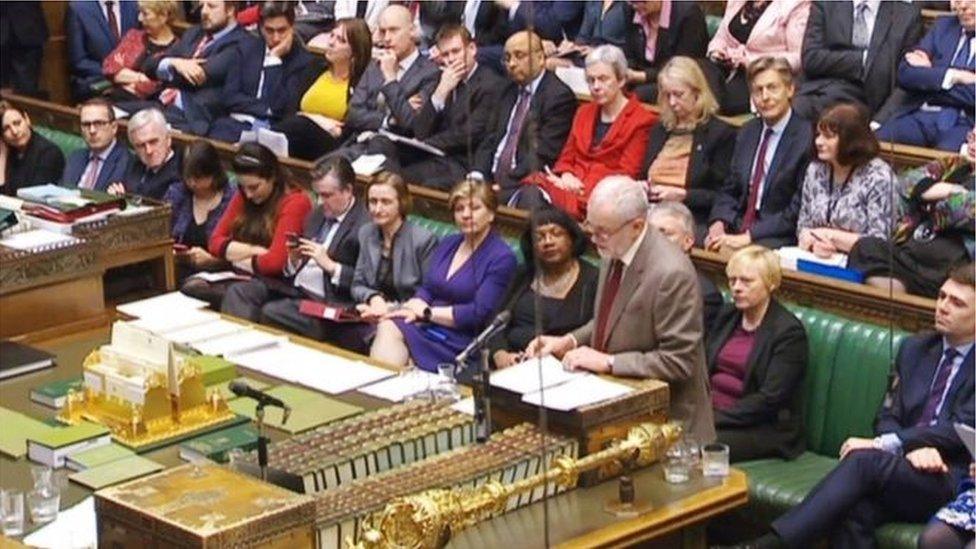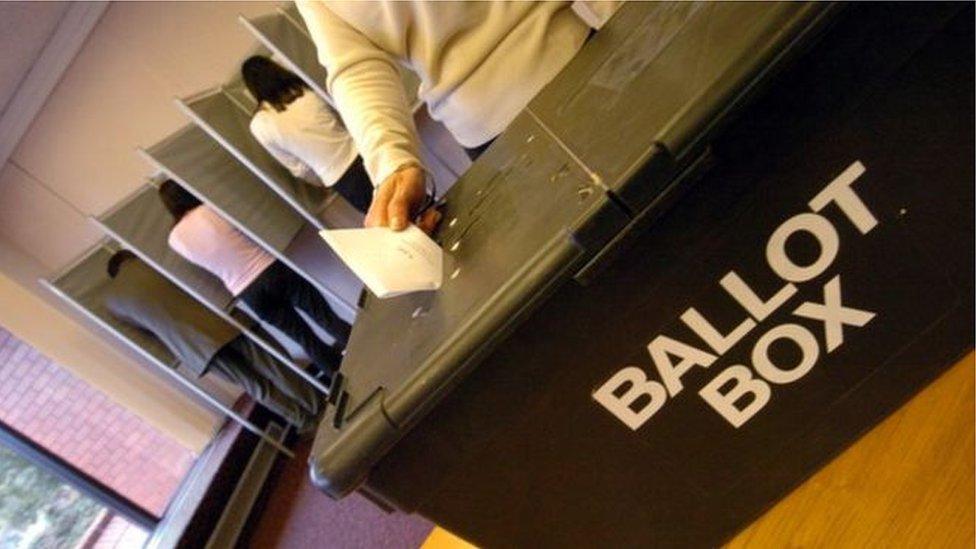Boundary review faces unequal struggle for equal votes
- Published

Thousands of voters registered their vote on the 5 February
Suddenly it's politics by numbers: predominantly negative numbers.
The Midlands stands to lose six MPs and 63,400 voters in two separate, but not entirely unconnected, projects to redesign and reconstruct our electoral machinery. We are told both are aimed at fairer voting. Campaigners warn they could have the opposite effect.
First, the review of our constituency map.
The Boundary Commission for England has started work on radically redesigning it as part of the government's drive to reduce the number of MPs by 50 to 600.
It also aims to iron out some of the disparities in the sizes of constituencies so each has no fewer than 71,031 and no more than Why equal votes are an unequal struggle78,507 voters.
This would bring them up to date with population shifts, otherwise known as 'the demographics'', to make sure a vote cast in any one constituency weighs more or less the same as one cast in any other.
In the process, even in this smaller Parliament, it is estimated to be worth up to 20 more seats to the Conservatives as the number of constituencies in urban areas with falling populations is reduced and the number in surrounding suburbs and shires where populations are growing, is increased.

Labour are thought to be the most at risk due to proposed electoral changes
But critics warn this 'snapshot' effect may itself be misleading: populations in some urban areas such as inner city Birmingham are now rising fast.
Some of our most hotly-contested marginal 'see-saw' seats are bound to be redrawn: Wolverhampton South West, which Labour's Rob Marris reclaimed from the Conservatives at the last election, has an electorate of just 57,301. Gloucester, a Labour seat through three successive general elections, has been held by the Conservatives Richard Graham since 2010: it has an electorate of very nearly 80,000.
The case for at least a measure of standardisation would appear unanswerable. But how exactly it takes effect is proving increasingly controversial.
Many of our key seats look set either to disappear altogether or to undergo fundamental alterations when the Boundary Commission for England publishes its proposals in the Autumn. Already there is speculation that this could be the opportunity for local Labour activists to 'purge' MPs who have spoken out against Jeremy Corbyn: Tristram Hunt (Stoke Central), Pat McFadden (Wolverhampton South East) and Emma Reynolds (Wolverhampton North East) are among the prominent names being bandied about.
The Commission's Secretary, Tom Hartley said: "We will need the help of residents in all regions to ensure our proposals take account of local ties and best reflect the geography on the ground."
And that's where the two separate electoral projects I mentioned earlier begin to interact.
Demography or democracy?
The other factor in play here is known as Individual Electoral Registration or IER, which was vigorously opposed by campaigning organisations including the Labour Party.

Thousands of people could disappear off the electoral register
It warned it would lead to millions of people disappearing from the electoral rolls altogether: people such as students or others living in multi-occupancy accommodation who had until now been registered among lists of voters.
The government said making voters register as individuals would deal with anomalies such as the 'phantom voters' who still appeared on the lists even though they had moved away or died.
But campaigners were suspicious. They said you didn't need to be obsessed with conspiracy theories to see a Tory plot to remove predominantly Labour-supporting voters including students from the electoral register.
And now from the Office for National Statistics come the figures which show that there has indeed been a 1.5% fall in the number of people registered to vote here in the Midlands, down from 4,363,741 to 4,300,343. Falling numbers are reported in 47 of our 63 constituencies.
What's more, the two seats witnessing the biggest falls both have significant student populations: in Birmingham Selly Oak, adjoining the University of Birmingham. the electorate is down by 6.7% and Newcastle-under-Lyme, home to Keele University, has seen a fall of 4.6%.
The "Hope not Hate" campaigner John Page describes it as "the biggest single act of electoral disenfranchisement in our history".
When I interviewed him on the "Sunday Politics" recently, he wondered: "Why on earth would the government want to do a boundary review based on undercounting of voters? We will be stuck for a generation with the number of votes at 1st December 2015 when everyone knows that's under-representation."
Sunday Politics Midlands, BBC One
Now that the electoral numbers have been duly crunched, published and the boundary review put under way, we'll be returning to this in our programme this weekend.
Joining me in the studio will be two MPs who have witnessed more than their share of constituency boundary upheavals on their own home turf.
The Attorney General, Jeremy Wright must have one of the most chequered constituency histories of any of our MPs. When he was first elected in 2005 he was the Conservative MP for Rugby and Kenilworth. But in 2010 with boundaries redrawn he switched to Kenilworth and Southam. Now it is set to be redesigned yet again, straddling the border between Warwickshire and the West Midlands as the new seat of Kenilworth and Dorridge.
Steve McCabe was elected Labour MP for Birmingham Hall Green in 1997. But after the 2010 boundary changes he switched to the Selly Oak seat which, as we have seen, is home to thousands of students and where the biggest fall in the electorate has been reported after Individual Voter Registration.
Also joining us will be Mick Temple, Professor of Politics at Staffordshire University to explain the political significance of the changes and their effects on the student communities with whom he works.
And I hope you can join us too. That's "Sunday Politics Midlands", BBC One, this Sunday 6 March 2016.